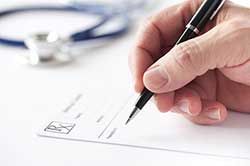 ©iStock.com/ognianm
©iStock.com/ognianmMisuse of prescription drugs means taking a medication in a manner or dose other than prescribed; taking someone else’s prescription, even if for a legitimate medical complaint such as pain; or taking a medication to feel euphoria (i.e., to get high). The term nonmedical use of prescription drugs also refers to these categories of misuse. The three classes of medication most commonly misused are:
- opioids—usually prescribed to treat pain
- central nervous system [CNS] depressants (this category includes tranquilizers, sedatives, and hypnotics)—used to treat anxiety and sleep disorders
- stimulants—most often prescribed to treat attention-deficit hyperactivity disorder (ADHD)
Prescription drug misuse can have serious medical consequences. An overall increase in prescription drug misuse1 over the past two decades is reflected in treatment admissions for prescription drug use disorders69 and overdose deaths involving prescription drugs—both of which initially rose significantly before holding steady through 2020.2–6
